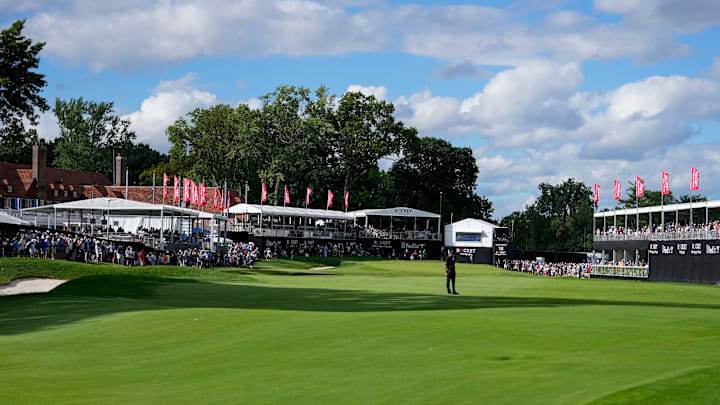After high winds and lackluster performances by leaders kept scores from getting lower at last week's Travelers Championship at TPC River Highlands, the Rocket Classic arrives with another golf course rife with birdie opportunities.
As I discuss on my podcast, Linksworms, Detroit Golf Club is a classic Donald Ross layout established in 1906, and it is in dire need of restoration. The good news is that a restoration will, in fact, be taking place at this club over the next year. It has not yet begun, however, so we are left with one more iteration of the Rocket Classic on a charmless, forgettable, easy golf course.
Detroit Golf Club has an impressive historic pedigree, but it has lost its character over the decades and has become a boring and defenseless golf course.
Memorable Holes: 2.0
The biggest flaw with Detroit Golf Club, one that will hopefully be rectified with the restoration, is the sheer monotony of the layout, with every hole seemingly repeating itself over and over again. The land is relentlessly flat, and the vast majority of holes are straight with a couple of fairway bunkers ending in green complexes with one or two more bunkers protecting the sides.
The layout feels like an average municipal course with better groundskeeping and faster greens. Nothing wrong with that for the average recreational golfer, but it does not meet the standard for a PGA Tour event.
Interest: 4.0
The level of interest at Detroit Golf Club is a bit higher simply because of the greens, as many of the putting surfaces are pitched sharply, making for interesting recovery shots around the greens. The 18th hole is a great example, which we will discuss later.
Additionally, some of the bunkers are deep with high faces, adding to the short-game challenge around a handful of green complexes.
Beyond these traits, Detroit Golf Club presents an abundance of flat, straightforward, unspectacular challenges with little opportunity for shot-making.
Par-3s: 4.5
The par-3s at Detroit Golf Club are just okay; they lack variety and creativity.
The fifth measures 167 yards and features a raised green surrounded by deep bunkers and rough.
The ninth is 207 yards and is void of interesting features; the entrance to the green is wide and flat, and there are a few bunkers to the left.
The long 11th measures 233 yards and is also not very distinguished; the green is slightly elevated, and the front portion is guarded by a bunker on each side.
Lastly, the 160-yard 15th is similar to the fifth with an elevated green surrounded by bunkers on three sides. Due to the plateau-style green, the bottom of the flagstick often cannot be seen.
Difficulty: 2.0
Detroit Golf Club is one of the easiest courses on the PGA Tour.
As a par-72 measuring a little over 7,300 yards, it is not long, and much of that yardage is tied up in a couple of longer par-5s and par-3s, resulting in an abundance of short par-4s. For the most part, the penalty for missing fairways and greens is not severe enough to truly punish mishit shots.
One of the only truly difficult holes on the course is the 461-yard sixth. This par-4 bends slightly to the right and features a raised green that demands an accurate approach. Shots missed short and right will find the only greenside bunker, while any other miss results in a difficult chip from the rough below the green.
Finish: 5.0
The finishing holes, while not spectacular, are arguably the best aspect of Detroit Golf Club.
The 446-yard 16th is a solid par-4 with a tough landing area due to three bunkers that cut into the fairway. Many players will use less than driver off the tee to stay short of these bunkers.
The par-5 17th measures 577 yards and is well bunkered from tee to green. The green itself features a small area on each side guarded by a bunker, resulting in pin positions that are difficult to access.
The 455-yard 18th may be the best hole on the course; this par 4 is a dogleg left, and players can drive the ball over the tree line and a bunker on the left to leave a wedge into the green. A dry ditch cuts through the hole from the left side of the landing area across to the front-right side of the putting surface.
The green itself slopes wildly toward this ditch from back-left to front-right, and a bunker will catch shots that miss long and left.
Overall: 3.50
For the criteria used to determine these ratings, please click here.
